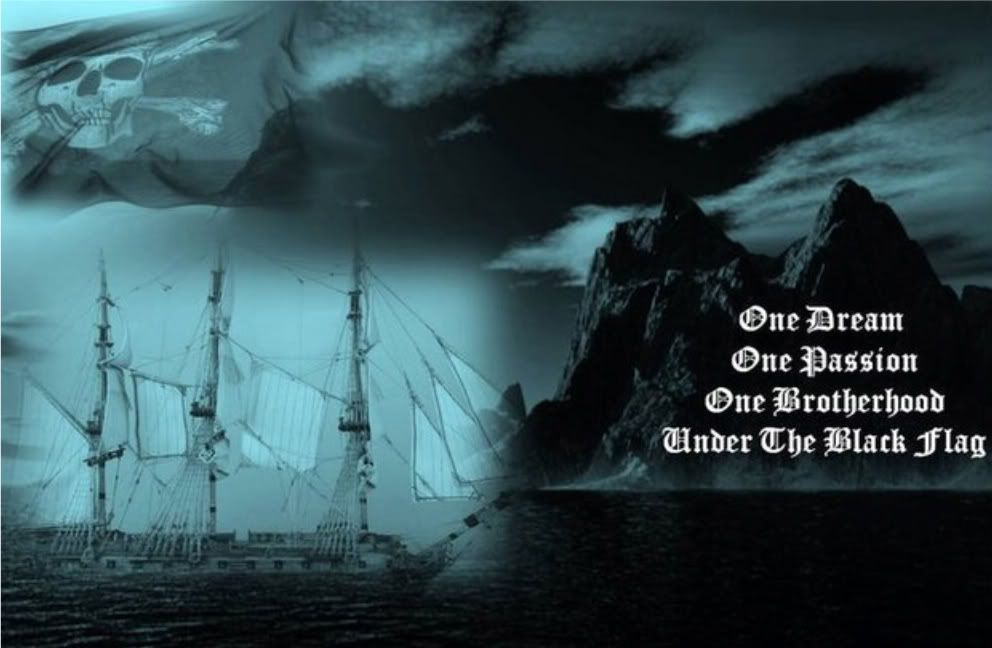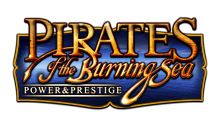Captain George Shelvocke
biographies, Captain George Shelvocke 4:56 π.μ.
Captain George Shelvocke (1675-1742) was an English privateer who wrote a famous 1723 book based on his exploits, A Voyage Round the World By Way of The Great South Sea.
Born into a farming family in Shropshire and christened at St Mary's, Shrewsbury on 1 April 1675,, Shelvocke joined the Royal Navy when he was 15. During two long wars with France and Spain he rose through the ranks to become sailing master and finally second lieutenant of a flagship serving under Admiral John Benbow in the West Indies. However, when war with France ended in 1713 he was beached without even half-pay support. When he was commissioned as captain of the ship Speedwell, he was living in poverty.
Alongside the Success, captained by John Clipperton, the Speedwell was involved in a 1719 expedition to loot Spanish ships and settlements along the west coast of South America. The English had just declared war with Spain, the 'War of the Quadruple Alliance', and the ships carried letters of marque, which gave them official permission to wage war on the Spanish and to keep the profits. Shelvocke broke away from Clipperton shortly after leaving British waters and appears to have avoided contact as much as possible for the rest of the voyage.
On 25 May 1720 the Speedwell was wrecked, perhaps deliberately, on Selkirk Island, now re-named Robinson Crusoe Island by the Chilean authorities. Shelvocke and his crew were marooned for five months but managed to rebuild a 20-ton boat using some timber from wreck plus new timber from the island. Leaving the island in October, they transferred into their first prize, renamed the Happy Return, and resumed their journey. They then made their way up the west coast of South America from present-day Chile to Baja California soon transferring to a series of captured enemy vessels. He then sailed for Macao before returning to England.
In England he was arrested on charges of piracy at the instigation of the principal shareholders of the voyage, though he was acquitted shortly after for want of evidence. The shareholders suspected, probably with reason, that he had failed to let them know about a significant proportion of the loot from the voyage and planned to keep it for himself and some other members of his crew. In this he probably succeeded. The events portrayed in A Voyage Round the World By Way of The Great South Sea were disputed by a number of critics, in particular by his Captain of Marines, one William Betagh. Shelvocke nevertheless went on to re-establish his reputation and died on 30 November 1742 at the age of 67 years, a fairly wealthy man. His chest tomb (Now removed) was in the churchyard of St Nicholas Church, Deptford, London by the east wall. A wall tablet in the chancel commemorates his son, also George Shelvocke, died 1760, who accompanied his father on his Journey Round the World.
In his book, Captain Shelvocke stated that his Second mate, Simon Hatley, shot a black albatross while they were rounding the Cape Horn and this episode in his book served to inspire the central image of Samuel Taylor Coleridge's famous poem, The Rime of the Ancient Mariner.
[edit] According to Wordsworth
There are several reminiscences by the poet William Wordsworth concerning the above:
"Written at Alfoxden in the spring of 1798, under circumstances somewhat remarkable. The little girl who is the heroine I met within the area of Goodrich Castle in the year 1793. Having left the Isle of Wight and crossed Salisbury Plain, as mentioned in the preface to "Guilt and Sorrow," I proceeded by Bristol up the river Wye, and so on to North Wales, to the Vale of Clwydd, where I spent my summer under the roof of the father of my friend, Robert Jones.
"In reference to this Poem I will here mention one of the most remarkable facts in my own poetic history and that of Mr. Coleridge. In the spring of the year 1798, he, my Sister, and myself, started from Alfoxden, pretty late in the afternoon, with a view to visit Lenton and the valley of Stones near it; and as our united funds were very small, we agreed to defray the expense of the tour by writing a poem, to be sent to the New Monthly Magazine set up by Phillips the bookseller, and edited by John Aikin.
"Accordingly we set off and proceeded along the Quantock Hills towards Watchet, and in the course of this walk was planned the poem of the "Ancient Mariner", founded on a dream, as Mr. Coleridge said, of his friend, Mr. Cruikshank.
"Much the greatest part of the story was Mr. Coleridge's invention; but certain parts I myself suggested: — for example, some crime was to be committed which should bring upon the old Navigator, as Coleridge afterwards delighted to call him, the spectral persecution, as a consequence of that crime, and his own wanderings. I had been reading in Shelvock's Voyages a day or two before that while doubling Cape Horn they frequently saw Albatrosses in that latitude, the largest sort of sea-fowl, some extending their wings twelve or fifteen feet. "Suppose," said I, "you represent him as having killed one of these birds on entering the South Sea, and that the tutelary Spirits of those regions take upon them to avenge the crime." The incident was thought fit for the purpose and adopted accordingly.
"I also suggested the navigation of the ship by the dead men, but do not recollect that I had anything more to do with the scheme of the poem. The Gloss with which it was subsequently accompanied was not thought of by either of us at the time; at least, not a hint of it was given to me, and I have no doubt it was a gratuitous afterthought. We began the composition together on that, to me, memorable evening."
Born into a farming family in Shropshire and christened at St Mary's, Shrewsbury on 1 April 1675,, Shelvocke joined the Royal Navy when he was 15. During two long wars with France and Spain he rose through the ranks to become sailing master and finally second lieutenant of a flagship serving under Admiral John Benbow in the West Indies. However, when war with France ended in 1713 he was beached without even half-pay support. When he was commissioned as captain of the ship Speedwell, he was living in poverty.
Alongside the Success, captained by John Clipperton, the Speedwell was involved in a 1719 expedition to loot Spanish ships and settlements along the west coast of South America. The English had just declared war with Spain, the 'War of the Quadruple Alliance', and the ships carried letters of marque, which gave them official permission to wage war on the Spanish and to keep the profits. Shelvocke broke away from Clipperton shortly after leaving British waters and appears to have avoided contact as much as possible for the rest of the voyage.
On 25 May 1720 the Speedwell was wrecked, perhaps deliberately, on Selkirk Island, now re-named Robinson Crusoe Island by the Chilean authorities. Shelvocke and his crew were marooned for five months but managed to rebuild a 20-ton boat using some timber from wreck plus new timber from the island. Leaving the island in October, they transferred into their first prize, renamed the Happy Return, and resumed their journey. They then made their way up the west coast of South America from present-day Chile to Baja California soon transferring to a series of captured enemy vessels. He then sailed for Macao before returning to England.
In England he was arrested on charges of piracy at the instigation of the principal shareholders of the voyage, though he was acquitted shortly after for want of evidence. The shareholders suspected, probably with reason, that he had failed to let them know about a significant proportion of the loot from the voyage and planned to keep it for himself and some other members of his crew. In this he probably succeeded. The events portrayed in A Voyage Round the World By Way of The Great South Sea were disputed by a number of critics, in particular by his Captain of Marines, one William Betagh. Shelvocke nevertheless went on to re-establish his reputation and died on 30 November 1742 at the age of 67 years, a fairly wealthy man. His chest tomb (Now removed) was in the churchyard of St Nicholas Church, Deptford, London by the east wall. A wall tablet in the chancel commemorates his son, also George Shelvocke, died 1760, who accompanied his father on his Journey Round the World.
In his book, Captain Shelvocke stated that his Second mate, Simon Hatley, shot a black albatross while they were rounding the Cape Horn and this episode in his book served to inspire the central image of Samuel Taylor Coleridge's famous poem, The Rime of the Ancient Mariner.
[edit] According to Wordsworth
There are several reminiscences by the poet William Wordsworth concerning the above:
"Written at Alfoxden in the spring of 1798, under circumstances somewhat remarkable. The little girl who is the heroine I met within the area of Goodrich Castle in the year 1793. Having left the Isle of Wight and crossed Salisbury Plain, as mentioned in the preface to "Guilt and Sorrow," I proceeded by Bristol up the river Wye, and so on to North Wales, to the Vale of Clwydd, where I spent my summer under the roof of the father of my friend, Robert Jones.
"In reference to this Poem I will here mention one of the most remarkable facts in my own poetic history and that of Mr. Coleridge. In the spring of the year 1798, he, my Sister, and myself, started from Alfoxden, pretty late in the afternoon, with a view to visit Lenton and the valley of Stones near it; and as our united funds were very small, we agreed to defray the expense of the tour by writing a poem, to be sent to the New Monthly Magazine set up by Phillips the bookseller, and edited by John Aikin.
"Accordingly we set off and proceeded along the Quantock Hills towards Watchet, and in the course of this walk was planned the poem of the "Ancient Mariner", founded on a dream, as Mr. Coleridge said, of his friend, Mr. Cruikshank.
"Much the greatest part of the story was Mr. Coleridge's invention; but certain parts I myself suggested: — for example, some crime was to be committed which should bring upon the old Navigator, as Coleridge afterwards delighted to call him, the spectral persecution, as a consequence of that crime, and his own wanderings. I had been reading in Shelvock's Voyages a day or two before that while doubling Cape Horn they frequently saw Albatrosses in that latitude, the largest sort of sea-fowl, some extending their wings twelve or fifteen feet. "Suppose," said I, "you represent him as having killed one of these birds on entering the South Sea, and that the tutelary Spirits of those regions take upon them to avenge the crime." The incident was thought fit for the purpose and adopted accordingly.
"I also suggested the navigation of the ship by the dead men, but do not recollect that I had anything more to do with the scheme of the poem. The Gloss with which it was subsequently accompanied was not thought of by either of us at the time; at least, not a hint of it was given to me, and I have no doubt it was a gratuitous afterthought. We began the composition together on that, to me, memorable evening."













